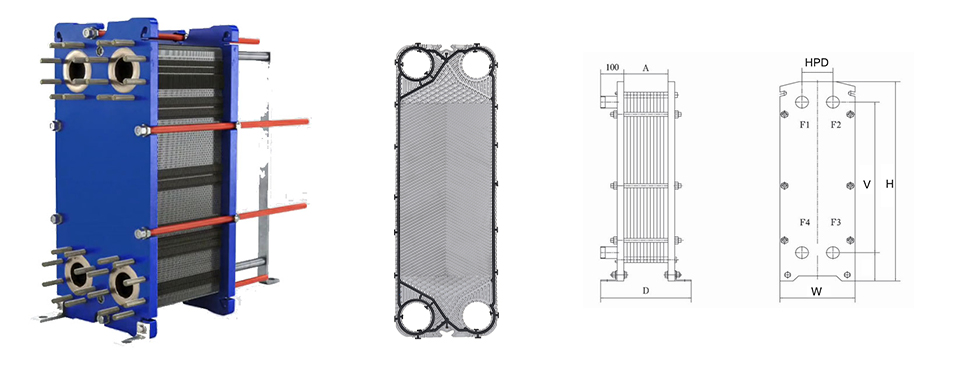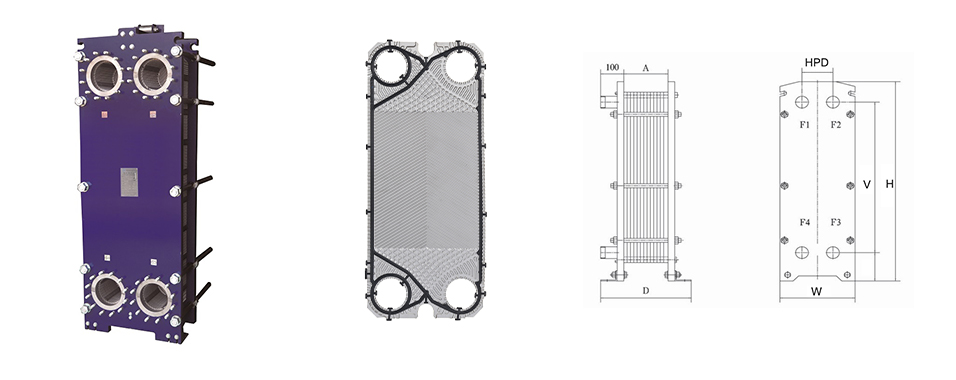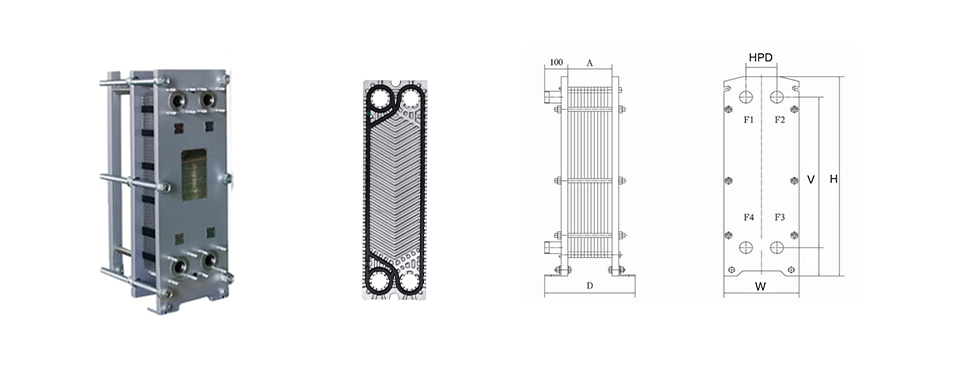Temporary treatment of plate heat exchanger gasket aging
Temporary treatment of plate heat exchanger gasket aging: The softening of the elastic gasket is related to pressure and temperature. When the gasket loses its elasticity, the Plate heat exchanger will leak. In some products, in order to solve the problem caused by the aging of the gasket The dripping phenomenon allows the sealing performance of the heat exchanger to be adjusted, that is, the bolts of the combined Plate heat exchanger are tightened again, and the pressing force of the elastic gasket between each heat exchanger is adjusted to solve the dripping problem.
The nameplate of the Plate heat exchanger with this function generally gives the maximum and minimum allowable stress. For the new Plate heat exchanger set, the minimum allowable stress should be used for connection and fixation. Depending on each set of Plate heat exchanger sheets You can adjust the tightening force of the Plate heat exchanger one or more times. Each time you tighten, you can screw the nut into 3mm, and always pay attention to the stress of the adjusting plate during the tightening process, and only allow for no working pressure For the heat exchanger, the tightening force is adjusted at room temperature to prevent dripping.
For Plate heat exchangers that do not give the stress adjustment range on the nameplate, the stress value is generally given in the parts drawing. When tightening this type of Plate heat exchanger, the tightening torque should not be lower than the value specified in the drawing in any case, because it It is related to the assembly quality and assembly deformation of the Plate heat exchanger. When the tightening torque reaches the specified value, the elastic gasket can be replaced in a planned manner. For the Plate heat exchanger used in important production equipment and corrosive media, It is recommended to have a set of spare seals. When the warehouse temperature is 18℃, the seals of the Plate heat exchanger can be stored for about 3 years in the transparent plastic packaging.
The fixing of Plate heat exchanger seals, in principle, the fixing of seals is divided into two categories: adhesive fixing and non-adhesive fixing. The shape of the gasket should be consistent with the shape of the plate heat exchanger seal, and it must be pointed out that the The connection type fixing method does not have any effect on the sealing function.








